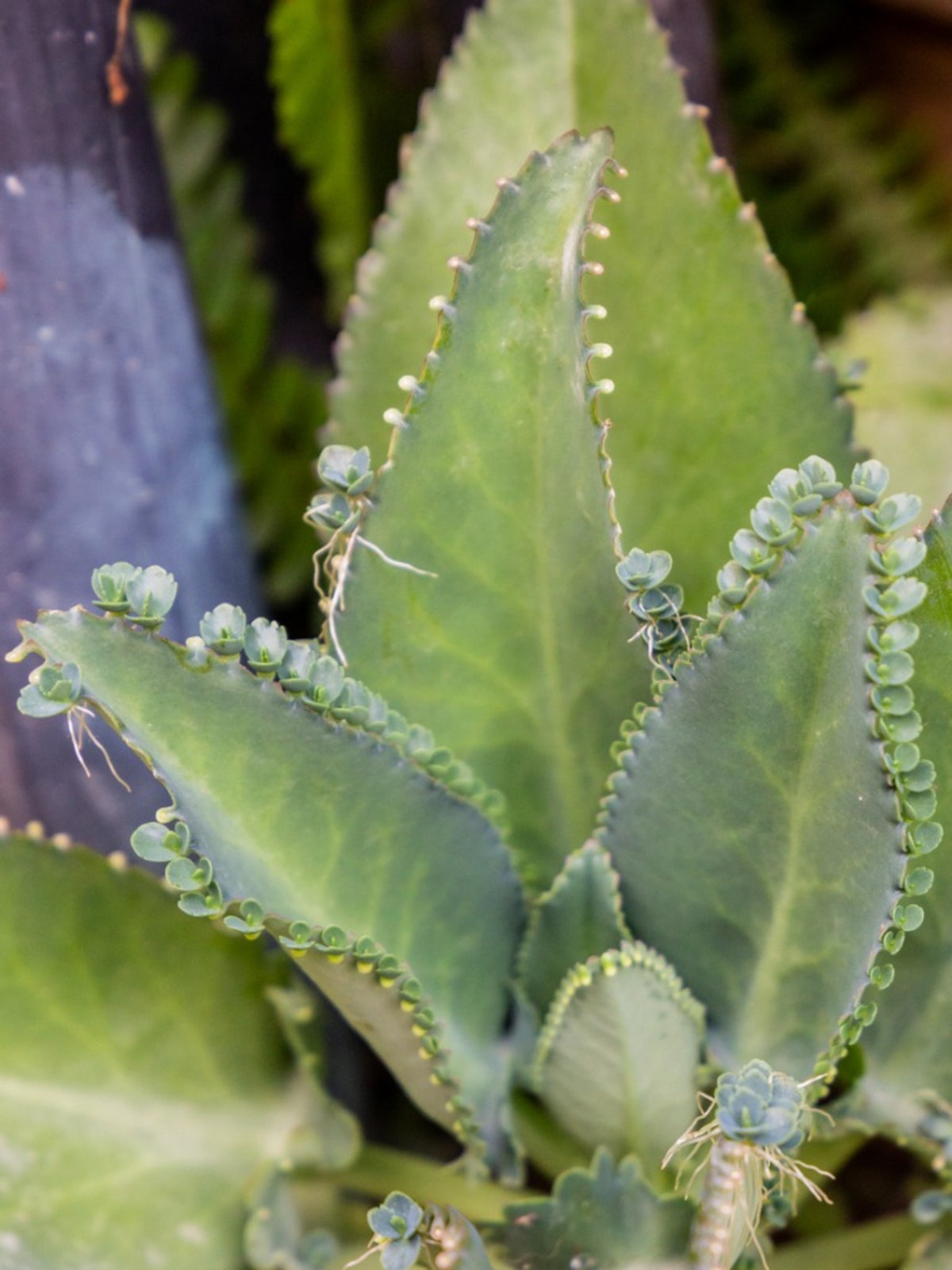Mother Of Thousands: How To Grow This Unique Succulent
The toxic but fascinating Mother of Thousands plant can spread rapidly, making it better as a potted plant than a member of the garden.

How To Grow Mother Of Thousands Or Kalanchoe Daigremontiana
Quick Facts
- Botanical name: Kalanchoe daigremontiana
- Height: 3 feet (.9 m) (Smaller as houseplants)
- Spread: 1'- 2' (30cm - 60cm)
- Sun exposure: Full or partial Sun
- Soil requirements: Sandy, well-draining
- Hardiness zones: 9-11
Many of us are familiar with the gift plant Kalanchoe, but there are many more varieties within the genus, many of which are not so familiar. Kalanchoe daigremontiana, or mother of millions plant, is a Madagascar native. It may also be referred to as the mother of thousands plant, devil’s backbone plant, alligator plant, or Mexican hat plant. Unique foliage adorned with tiny rosettes characterize this unique plant.
When growing mother of thousands as an outdoor plant in USDA hardiness zones 9 through 11, it may bloom with small, grayish lavender flowers in late winter. The mother plant then dies, but is replaced by many tiny plantlets that drop and cause the plant to be considered invasive. For this reason, most gardeners find growing mother of thousands works best in a container.
Mother of Thousands Care
As a foliage plant, this kalanchoe has wonderful blue-green, lance-shaped leaves, gently scalloped on the edges, with pinkish midribs and stems. Along the edges of the leaves are little plantlets, rosette in form and tiny. If the grower is lucky, the plant may produce grayish-pink, dangling flowers in winter that last for months.
Growing mother of thousands (Kalanchoe daigremontiana) provides an attractive foliage houseplant. Though rarely blooming when kept indoors, the flowers of this plant are insignificant, with the most interesting feature being the baby plantlets continually appearing on the tips of the large leaves.
Light
As a native of Madagascar, this plant is accustomed to plenty of sunshine and warmth. In the home interior, situate the container where the plant gets 8 hours of sun per day. A bright southern or western window is ideal. In homes with lower light, use an artificial plant light to provide enough light. Plants grown outdoors in warmer regions need to be acclimated to direct sun rays and planted in the ground where some shade occurs during the hottest part of the day.
Water
Sign up for the Gardening Know How newsletter today and receive a free copy of our e-book "How to Grow Delicious Tomatoes".
Watering is pivotal to mother-of-thousands care. Mature plants can tolerate periods of drought, but the best growth is through a regular watering schedule. Container plants need more water than those grown in the ground. Water when the top few inches (7 cm) of the soil are dry, or when a finger inserted into the soil to the second knuckle feels dry soil.
Succulents are often sensitive to tap water. Allow the water to off-gas overnight and provide a tepid temperature. Rain water or purchased de-ionized water are also suitable. Water from the bottom of the container or around the root zone to prevent damage to this alligator plant’s leaves.
Temperature & Humidity
Mother of thousands plants are perfect for the average home interior. They need warm temperatures, preferably between 60-70 degrees Fahrenheit (15.56-21 C). Despite its powerful sounding label of “devil’s backbone,” this plant is not at all cold-hardy. It is only suitable for United States Department of Agriculture zones 9-11.
However, the plant may be moved outdoors for summer and brought inside in fall. It can tolerate higher humidity than some desert succulents but should have freely moving air to prevent rot issues.
Soil
Any purchased potting mix amended with gritty material such as coarse sand or perlite will provide a perfect medium. Ensure the container has plenty of drainage holes. Plants in the ground may need gritty material added to the planting hole.
Fertilizer
Kalanchoe daigremontiana goes into a hibernation state in winter and does not grow. As such, the plant doesn’t need fertilization during the cold months. During the growing season, feed the plant with a balanced fertilizer 2-3 times.
Problems, Pests & Diseases
Root rot from excess water and damage to the leaves from watering overhead are 2 main issues. Powdery mildew and rust are also common where plants are kept excessively wet in warm, high humidity situations. In low light, the plant can get leggy. Pinch off longer growth to promote a more compact plant, and move to brighter light. Aphids and mealybugs are the primary pests of outdoor plants.
How to Plant Mother of Thousands
Plant or re-pot mother of thousands in spring, just as new growth is beginning to appear. Provide the plant with a bit more shade as it establishes, gradually introducing it to brighter light. Always plant container plants at the same level they were in the nursery pot.
Propagation
As the name would suggest, the mother of thousands plant can make many new plants. The little plantlets on the leaves fall off as they mature, making the plant invasive where conditions are ideal. Plant plantlets in soil when they have roots. Keep them moderately moist.
The kalanchoe may also be started from seed. Sow in early spring on the surface of the soil, where temperatures are 66 degrees Fahrenheit ( 19 C.). Keep the container lightly moist in moderate light. To increase humidity, place the container in clear plastic. After germination, move the container to gradually brighter light.
Repotting
Repotting frequently is not necessary as part of mother of thousands plant care. Around every few years or so, provide it with fresh soil mixture. Increase the pot size only when the plant is crowded. Re-pot pups when they have rooted and are a couple of inches tall (5 cm).
Mother of Thousands Varieties
Kalanchoe daigremontiana- Upright perennial, lance shaped leaves, pendant flowers.
Kalanchoe delagoensis- Biennial to annual.
Kalanchoe fedtschenkoi- Leaves have pink margins, pendant flowers are purple.
Kalanchoe gastonis-bonnieri- Purple blotched, very large leaves.
Kalanchoe pinnata- Curved serrated leaves.
Kalanchoe houghtonii- Spiky rosettes, architecturally distinct v-shaped leaves.
Is the Mother of Thousands Plant Poisonous to Touch?
The milky sap of the mother of thousands is toxic and may cause contact dermatitis. Wear gloves and perhaps eye protection when cutting into the plant. If there are pests or children in the home, keep it away from curious tasters as the plant is poisonous.


